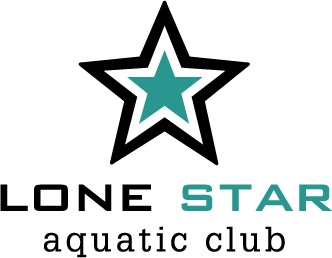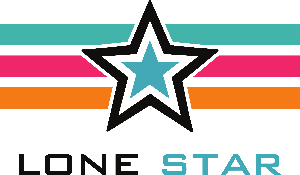
Background
Meet entries are handled completely online. A coach will send the team an email with the details for the meet: dates, location, entry criteria, deadline for entry, fees, etc. The meet opportunities will also be displayed on the Events page of our website. First, the coach emails the meet information from the group email.
Second, the family decides whether the dates and times work and what events they are eligible to swim.
Next, the person completing the entries must sign on to their Team Unify account with their email address and password to view the entries available for their swimmer.
Finally, each family must select the individual events they want their swimmer to compete in.
Each family will be billed for meet entries on their beginning-of-month statement. The cost for meet entries will be published with the meet information. There is a fee for each event, plus a meet fee per swimmer. The coaches decide who will swim in relays. Some meets toward the end of the season have minimum time requirements that your child must have achieved in a USA swim meet in order to participate. The swimmer's coach can tell you if your swimmer is eligible for a particular meet.
Signing up for Meets
How do I sign-up for a Meet?
To sign-up, log into your account and find the swim meet event section on our site. On the Athlete Signup page, click on the name of the swimmer that you wish to sign up. You may also do this through the OnDeck app. On the next page, chose the option "YES, Please sign (swimmer) up for this event". A list of events will appear. Click on the box that appears before the swimmer's time (on the left hand side of the screen) to select which events you want to enter.
Once you have completed this, click the Save Changes button at the bottom right hand side of the screen.
**If you do not click the Save Changes button, your entries will NOT be saved!!**
Once you have done this, your swimmer will show as "committed" for the meet. The coaching staff will approve each swimmer's entries to complete the process.
**Be advised that once meet entries are submitted and processed, no refunds- even if you don’t attend the meet.**
Things for parents to know when signing up for a meet:
- Meet information and documents are emailed by the head coach and also posted on our team’s website under the meet section
- There are 4 important documents that are shared with every meet:
—Meet Info, Timeline, Psych Sheet and Heat Sheet —
- Once the meet becomes open, you will receive an email and have a certain amount of time to sign up your swimmers before it closes.
- You sign-up online through your TeamUnify account or use the OnDeck app
- Pay close attention to meet deadlines. Once the meet closes, the coach will not be able to sign up the swimmer.
- Meet fees vary depending on the hosting location. They are usually $10-12 per event + $10.00 coaching fee per child and per meet.
- Some meets limit the number of events per day and per weekend. Pay close attention as to not exceed the amount.
- Meet can either be “open to all swimmers” or require a certain time cut to be able to swim it. This information
is included in the email communication and is also listed in the meet information. Always check with your coach
if you are unsure about your child’s time or eligibility. - Consult with your coach to determine which events your child should swim.
- In-town/out-of-town Meets - Some meets will be local (e.g. UT swim center), others will be out of town (e.g. San Antonio, Belton, Corpus Christi). Out of town meets may require overnight stay at a hotel. Depending on the meet and swimmers attending, the team may be able to negotiate hotel group rates. This information will also be communicated via email by the coach or a board member.
- Age group - meets are sometimes divided up by age groups. There are meets in which the 12 & under age group swims in the morning and 13 & over age group swims in the afternoon. Other meets may be for just 12 & under or 13 & over. Some meets may combine all age groups. This information will also be listed in the meet information document.
Things to Know the Day of the Meet
For your swimmer:
- Swim bag, black competition swim suit, team silicone cap (refer to gear ordering), goggles, towel(s), snacks, water or other sports beverage, team T-shirt (one is provided at registration), pants/shorts, hoodie or parka (some facilities have A/C), and a sharpie for event marking. Ensure all personal items are clearly marked with child’s name.
- Your child may have a lot of time in between events. Some small form of entertainment such as a book, small toy, etc. can be brought. The team is not responsible for lost, broken, or stolen items at a meet.
For the Parents:
- Depending on the venue, bring a blanket or foldable chairs. Some meets will allow for parents and swimmersto sit together. Some other, will not. Seating area may be limited and can get crowded.
Warm-up schedules: the team warms-up before each competition day. The warm-up start times vary per meet and per day.
It is extrememlt important for parents to check the website and your for updates on warm-up times. All swimmers are to report to the coach before the start of a warm-up. Warm-ups are usually ONE hour before the meet starts. Please take this into consideration when planning travel time to a meet.
Heat Sheet Review: please review the heat sheet the day of the meet. This sheet will tell your child which heat and lane they
will be swimming for each event. Depending on the venue, these can be purchased at the competition, accessed online (if available), or via App (MeetMobile).
Event Marking: in order to help your child remember what events they are swimming, it is advisable to mark this information
in a small area on his/her arm or leg with the use of a sharpie. The information needed:
- Event # (note that the event # varies by gender and age group), event name, heat, and lane
Check-in: please read the meet information carefully. If your child is swimming any 400+ distance event, positive check-in will
be required. There is usually a grace period for this, so pay close attention to the times allowed as listed on the meet information.
Deck Entries: some meets will allow deck entries. Usually there is an extra cost involved. Deck entries must be coordinated
with the coach. Some meets will have deadlines and restrictions for deck entries. Deck entry cost is the responsibility of the parent/swimmer.
Ribbons and awards: this varies from one meet to the other, but typically ribbons are awarded to 1st – 8th place by event,
gender, and age group. Awards are collected by the coach and distributed the following week. The coach will place them
in the child’s family folder.
Scratching from an event: The Meet Info document will have specific information on scratching rules. Contact the coach
if you need to scratch your child from an event.
Parent seating: Depending on the venue, parents may or may not be able to sit with the swimmer. Usually bleachers are provided for parents to sit. LSAC team tries to sit together when possible.
Show your team support and wear your team gear and cheer on!



